 Weird Stuff
Weird Stuff  Weird Stuff
Weird Stuff  Mysteries
Mysteries 10 Tragic Disappearances and Deaths in Joshua Tree National Park
 History
History 10 Ways Childhood Really Sucked in the Old West
 Music
Music 10 Name Origins of Famous Bands from the 1990s
 Religion
Religion 10 Biggest Turnarounds by the Catholic Church
 Weird Stuff
Weird Stuff 10 Unbelievable Times Laws Had Unintended Consequences
 Humans
Humans Ten Historic Women Who Deserve Way More Credit Than They Got
 Movies and TV
Movies and TV 10 Films That Spawned Major Lawsuits
 History
History Ten Times Towns Were Wiped Off the Face of the Earth
 Creepy
Creepy 10 of the Most Disturbingly Haunted Public Houses in the UK
 Weird Stuff
Weird Stuff 10 Niche Subcultures That Are More Popular Than You Might Think
 Mysteries
Mysteries 10 Tragic Disappearances and Deaths in Joshua Tree National Park
 History
History 10 Ways Childhood Really Sucked in the Old West
Who's Behind Listverse?

Jamie Frater
Head Editor
Jamie founded Listverse due to an insatiable desire to share fascinating, obscure, and bizarre facts. He has been a guest speaker on numerous national radio and television stations and is a five time published author.
More About Us Music
Music 10 Name Origins of Famous Bands from the 1990s
 Religion
Religion 10 Biggest Turnarounds by the Catholic Church
 Weird Stuff
Weird Stuff 10 Unbelievable Times Laws Had Unintended Consequences
 Humans
Humans Ten Historic Women Who Deserve Way More Credit Than They Got
 Movies and TV
Movies and TV 10 Films That Spawned Major Lawsuits
 History
History Ten Times Towns Were Wiped Off the Face of the Earth
 Creepy
Creepy 10 of the Most Disturbingly Haunted Public Houses in the UK
10 Types Of Bacteria With Real Superpowers
With their microscopic size, bacteria are everywhere[1] and can perform feats that are unachievable for beings like us. In recent times, we have shown you some truly extraordinary microorganisms, such as bacteria that eat radioactive waste. However, there are certain species of these little creatures with abilities that we could say are true superpowers.
Now, we will show you ten types of bacteria with powers that you would expect to see in a superhero comic book instead of in real life. If this information inspires any film studio to make a blockbuster movie of superhero bacteria, we strongly recommend that you ask for scientists’ permission first.
10 Caulobacter Crescentus
(The Super-Adhesive Bacteria)
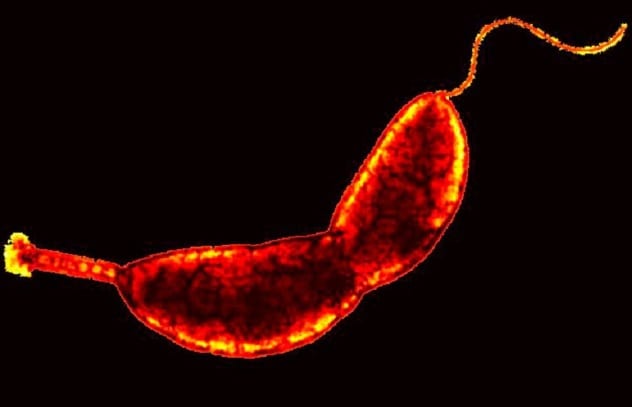
If a gecko attaches to a surface with its legs, it would take hundreds of kilograms of force to just “unstick” it from there. However, even that does not compare to what the bacterium Caulobacter crescentus can do. As if it were a bacterial version of Spider-Man, C. crescentus has an adhesion force seven times stronger than that of geckos and is three to four times more adhesive than commercial superglue.
C. crescentus lives in any wet environment and in any type of water, be it fresh water, salt water, or even tap water. The microbe moves with the help of an appendage called a flagellum until finding a place to live. Then, one end of C. crescentus attaches to the surface in question, after which the bacterium is anchored to it through thin structures called pili. When C. crescentus is finally in position, it secretes a sugary adhesive substance that sticks the creature to the surface immediately.
The results of scientific tests have shown that the “superglue” of C. crescentus has an adhesive force of about five tons per square inch. In other words, a small patch of this substance would be enough to lift an elephant or several cars off the ground.[2] Since C. crescentus move in places where there is not much to eat, it is believed that these bacteria also use their superglue to pick up nutrients. Evidently, scientists see the practical potential of such a sticky substance, whose uses could range from surgical adhesives to durable construction materials.
9 Magnetotactic Bacteria
(Living Magnets)
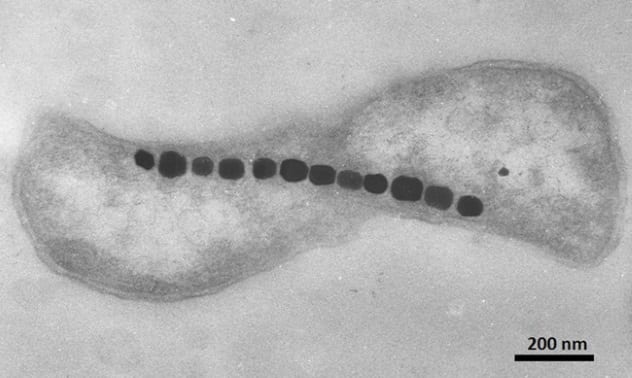
A truly amazing power would be to control magnetism. Perceiving nearby magnetic fields, manipulating metal objects, and moving just by taking advantage of the Earth’s magnetic field sounds like something great but, unfortunately, far superior to human capabilities. Nevertheless, that does not mean that other living beings cannot do it, and in fact, some bacteria already have these fascinating abilities. Meet magnetotactic bacteria, the living magnets.
Magnetotactic bacteria (MTB) are microorganisms capable of accumulating iron oxide molecules and putting them together to form small “pebbles” called magnetosomes. These magnetic granules are 100,000 times smaller than a grain of rice, and an MTB stores many of them inside. In this way, the little inner magnets allow MTBs to feel the magnetic field of the Earth and thus move toward the South Pole or the North Pole, depending on where there is more food. But that is just the beginning.
As MTBs usually live in swamps and similar environments with little oxygen, the microbes must move using their flagella until finding a suitable place. But sometimes, the sediment is too dense to move through in that way, so the MTB uses its magnetosomes to gain thrust with the Earth’s magnetic field.[3] MTBs could also be true superheroes. To eliminate dangerous bacteria from the human body, scientists have learned to fill these microorganisms with magnetosomes and then kill them using something called “magnetic heat.” MTBs could provide such magnetosomes and thus help eliminate infectious viruses in large quantities.
8 Thiomargarita Namibiensis
(The Little Giant)
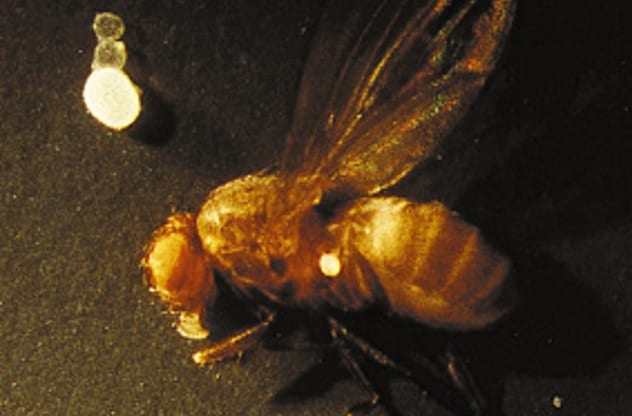
Among the superheroes in Marvel comics (and movies), there are some characters that use a certain substance to grow up to the size of a multistory building. While, at the moment, no human is known to have such an ability, some types of bacteria already have the superpower of growing in size at will. And here we will see the largest species of all.
Thiomargarita namibiensis is considered the largest bacterium in the world, three million times larger than average bacteria. Discovered in 1997 on the coasts of Namibia, this microbe is capable of reaching a size of up to 0.75 millimeters, making it visible even to the naked eye. Heide Schulz, the biologist who discovered the bacterium, said in a report: “In terms of size, a T. namibiensis cell is to an Escherichia coli cell what a blue whale is compared to a newly born mouse.”
The extreme size of T. namibiensis is due to its feeding mechanism. The bacterium uses nitrate and sulfide to obtain energy. And since nitrate concentrations are low in the place where it lives, T. namibiensis tries to store as much nitrate as possible inside its own body. That way, 98 percent of its volume is nitrate stored inside an organelle in the center of the bacterium.
In appearance, the T. namibiensis looks white due to the multiple sulfur granules that the creature also stores inside. It is worth noting that since T. namibiensis feeds on sulfur, the populations of these bacteria detoxify seawater, allowing the proliferation of marine life. These microorganisms usually join together by a layer of mucus, forming what looks like a long string of white spheres. This is what gives the bacterium its name, since Thiomargarita namibiensis means “Sulfur Pearl of Namibia.”[4]
7 Modified Escherichia Coli
(The Living Computers)
![]()
Humans have always tried to find the best way to store information. Many millennia ago, we started sharing our ideas through paintings inside caves. Then came books and computers, and we recently learned that diamonds are great data storage devices. But then bacteria entered the game when scientists managed to insert information into them. That’s right: Some microbes can transport text, videos, and images in their bodies, turning them into living computers.
It happens that when bacteria destroy an enemy virus, they store small parts of the virus’s DNA inside their own bodies. In this way, microbes learn to recognize similar threats in the future. Taking advantage of that mechanism, scientists from Harvard University first cultivated a population of 600,000 Escherichia coli bacteria. Then, they coded an image of a human hand and a short video of a galloping horse into a DNA strand.[5] And finally, the E. coli received electric shocks so that they activated their defense mechanism and thus absorbed the man-made DNA.
To test if the method worked, the scientists sequenced the new genetic code of each bacterium. Then they ran the sequence in a computer program that read it and transformed it into images. Incredibly, the resulting pictures were practically the same as the original files, with just a few pixels of difference. Although this technique sounds difficult, current genetic sequencing technologies make it relatively easy to perform the process.
Anyway, this is not the first time that E. coli microorganisms have carried our information. In 2003, US scientists introduced DNA written with the lyrics of a song inside E. coli bacteria. And in 2011, Canadian writer Christian Bok inserted a poem into the DNA of a single E. coli , which then glowed red and began to “write” its own poem. If you wonder what the potential of this ability is, a gram of DNA can contain 455 exabytes (455 billion gigabytes) of data, about a quarter of all of humankind’s information. So in the not-too-distant future, we could be using modified E. coli populations as our personal microcomputers.
6 Shewanella Oneidensis
(Electric Microbes)
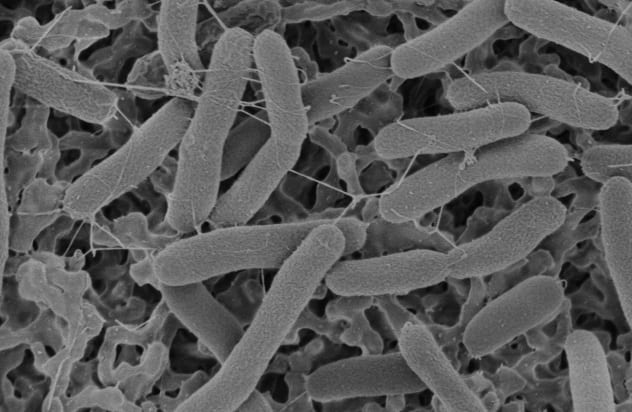
Electrogenic bacteria are microorganisms that can naturally generate electricity through extracellular transference of electrons. To date, hundreds of species of electrogenic bacteria have been found, and they are everywhere, from the bottom of a lake to inside our own bodies. However, a particular bacterium of this type has unique characteristics, which have made it a great object of scientific study.
Shewanella oneidensis is a bacterium discovered in the lakes of New York.[6] While most life-forms (including us) use oxygen to get energy, S. oneidensis “breathes” metal molecules such as manganese, lead, and iron, among others. For this, many of these bacteria join together and attach to the surface of rocks containing metals. Then, they release long filaments called nanowires, which they use to connect directly to the metal. In that way, the microbes transfer electrons from inside their bodies to metal molecules, and this flow of electrical current is what keeps them alive. Sometimes, S. oneidensis bacteria do the opposite and extract electrons from such metals, so they literally live on electricity.
It is presumed that the nanowires of S. oneidensis allow it to conduct electricity over long distances, as well as to supply electrons to other nearby bacteria. The ability of S. oneidensis to generate electricity has aroused the interest of the scientific community. For example, some researchers are studying the potential of the bacterium to treat wastewater. Meanwhile, NASA took samples of these creatures to space to see if they can be used in the construction of future life-support systems.
5 Pseudomonas Syringae
(The Ice-Maker)
Just like Marvel’s Iceman, the bacterium Pseudomonas syringae can freeze water by touching it, even at temperatures above the natural freezing point. P. syringae bacteria live mostly in farm crops, as well as in many other types of plants. To feed themselves, these little creatures freeze the tissue of plants in order to easily access their nutrients, which, in turn, can cause great damage to agriculture. In addition, P. syringae have also been found in snowy environments from Europe to Antarctica. But how do these bacteria freeze things?
In 2016, scientists learned that P. syringae uses certain proteins in its outer membrane to make ice. First, these proteins modify the order of water molecules, forcing them to form a more solid structure like that of ice. And to make this process easier, the proteins also extract heat from the water, causing it to freeze regardless of the surrounding temperature.
Pure water does not freeze until it reaches around – 40 degrees Celsius (–40 °F). However, a single droplet of P. syringae bacteria can instantly freeze 600 milliliters (20.3 fluid ounces) of such water cooled to only – 7 degrees Celsius (19.4 °F). It is also believed that these microbes contribute to the formation of rain and snow when the wind drags them into the atmosphere.[7] So we can say that our good P. syringae is both an ice-maker and a rain-maker. Due to their extraordinary capabilities, P. syringae bacteria are currently used to make snow in ski resorts, although they could even be used in biotechnological processes.
4 Modified Klebsiella Planticola
(World Destroyer)
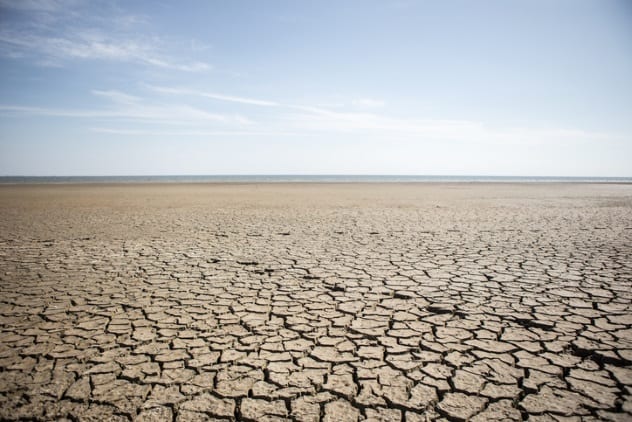
The superpower of this bacterium gives it the ability to potentially erase all plant life on Earth, so Klebsiella planticola earns the prize for the supervillain of this list. Klebsiella bacteria are present in the roots of almost every plant on Earth. These creatures are responsible for decomposing dead plants, thus cleaning the soil of organic waste.
German scientists took a sample of K. planticola bacteria and genetically modified them so that, by decomposing plants, they produced fertilizer and ethanol at the same time. A bacterium of this type would be easy to sell for agricultural and industrial uses, so in the early 1990s, it was planned to test K. planticola in the fields.
However, in order to test its effectiveness, a team at Oregon State University conducted a laboratory experiment with a sample of fertile, sown soil. One part of the soil was filled with the original K. planticola, while the modified bacteria were placed in the other part. The results showed that although the seeds germinated in both soils, all plants in the section of the modified microbes were dead after a week.[8]
The modified K. planticola produced 17 times more alcohol in the soil than plants could tolerate. In addition, plants use fungi to feed on soil nutrients, but the ethanol-producing bacteria increased the presence of worms that eat those fungi. So the plants not only died of poisoning but also of starvation.
Adding to its evil characteristics, it was confirmed that the modified K. planticola bacterium was able to survive in soil for a long time, unlike other modified bacteria. In the end, the “killer” K. planticola was not commercialized. But it was contended (albeit disputed) that had it been released in the fields, this bacterium would have ended up annihilating all plant life on a continental scale.
3 Aquifex
(The Microbe From Hell)
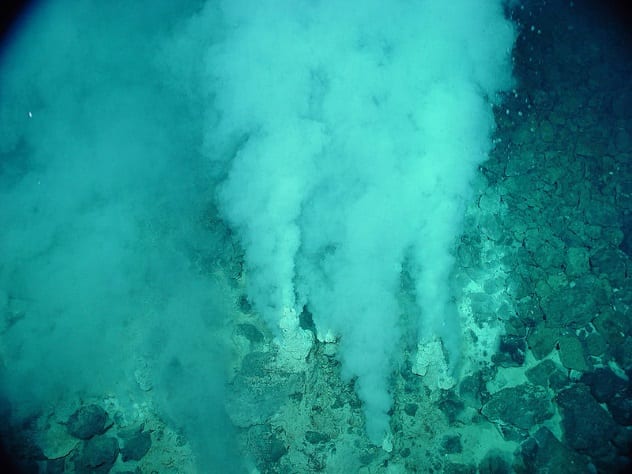
In the early 1980s, scientists found the first known hyperthermophilic organisms, microscopic beings capable of living and reproducing at temperatures close to 100 degrees Celsius (212 °F). But it happens that most of these microorganisms belong to the Archaea domain, a group distinct from bacteria and discovered in the late 1970s. However, some hyperthermophilic bacteria have also been discovered, and their abilities make them more durable than most life on Earth.
The genus Aquifex comprises bacteria capable of reproducing in underwater thermal vents and hot springs, at temperatures up to 95 degrees Celsius (203 °F). Just to get an idea, a human body submerged in that water would begin to boil until dissolving in a matter of hours. And even so, Aquifex can live in such an environment without difficulty, even at temperatures above 100 degrees Celsius (212 °F), which makes them the most heat-resistant bacteria of all.
As if that were not enough, Aquifex are also aerobic—that is, they can breathe oxygen. Although these microbes only tolerate low oxygen concentrations, they are among the few known aerobic hyperthermophilic bacteria. If the environment does not have oxygen, Aquifex can also breathe nitrogen. But the most impressive ability of these microorganisms is that they produce water as a byproduct while breathing.[9] For this reason, the bacteria earned the name Aquifex, which means “water-maker.”
2 Ancient Bacteria
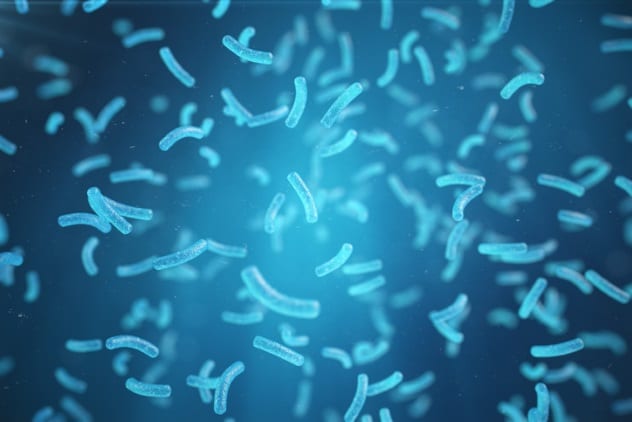
If everything goes well, humans can expect to live a little over 70 years on average. Some reptiles can live close to 200 years, while a few trees have lived around 5,000 years. But all that is just a blink (figurative, of course) for the oldest bacteria in the world. Indeed, in 2007, researchers discovered bacteria more than half a million years old, which were still alive.
A team of scientists from the University of Copenhagen (Denmark) obtained samples of these bacteria in layers of ice in Canada, Russia, and Antarctica. It is estimated that the microbes have been alive for about 600,000 years, and when scientists looked at their DNA, they were surprised to see that it was almost intact. This is something extremely unusual for creatures of that age, since DNA starts to break down after some time. To survive for millennia, many microorganisms enter a state of almost total inactivity, but even so, their DNA will continue to suffer great damage.
The key to the long life of these old bacteria lies in their amazing ability to self-repair their DNA. Instead of becoming lethargic and suspending its functions to survive, this particular creature keeps a small part of its metabolism active. In this way, the body of the bacterium will keep constantly repairing its own DNA while waiting for the environment to become more favorable for reproduction.
There have been other reports of even older living bacteria, such as 250-million-year-old bacteria trapped in salt crystals. However, these reports remain unconfirmed, and it is speculated that the samples were contaminated with modern microbes while in the laboratory. By contrast, the 600,000-year-old bacteria are authentic, since the researchers made sure to avoid any form of contamination during the tests.[10]
1 Staphylococcus Epidermidis
(The Anti-Cancer Fighter)

Cancer is the second-leading cause of death around the world. In 2018, almost ten million people died due to this type of disease, and the annual number of cancer cases is expected to reach 23.6 million by 2030. Well, that could change, because scientists have discovered a method to radically fight cancer. And you guessed right, the method involves bacteria.
In February 2018, a group of researchers from the University of California discovered that the bacterium Staphylococcus epidermidis has anti-cancer powers. This microbe is commonly found in healthy human skin. Upon careful analysis, scientists noted that S. epidermidis produces a chemical compound similar to a certain DNA component. When the researchers tested the substance (called 6-HAP) in the laboratory, they realized that it stopped DNA production. Specifically, the chemical prevented cancer cells from multiplying further. However, 6-HAP had no effect on normal cells, since certain enzymes within them deactivated the chemical.[11]
The scientists injected 6-HAP into a group of mice, while another group was left unaffected. The animals were then exposed to high doses of UV radiation. The results showed that although all mice developed cancer, the tumors of the mice with 6-HAP were 60 percent smaller than those of the normal mice. The researchers proceeded to repeat the experiment, this time by spreading S. epidermidis bacteria on the backs of mice instead of injecting them. Even in that way, the mice covered with the microbes developed only one tumor after the radiation dose, while the normal mice had up to six of them. Although more research is still needed on these creatures, it is believed that S. epidermidis could be used in the future to prevent multiple cancers—besides skin cancer.
Economy student, passionate about Graphic Design, an avid enthusiast of the art of writing.
Read more about the amazing (and terrifying) abilities of bacteria on Top 10 Bacterial Infections That Creatively Kill People and 10 Places You Would Never Expect To Find Bacteria.








